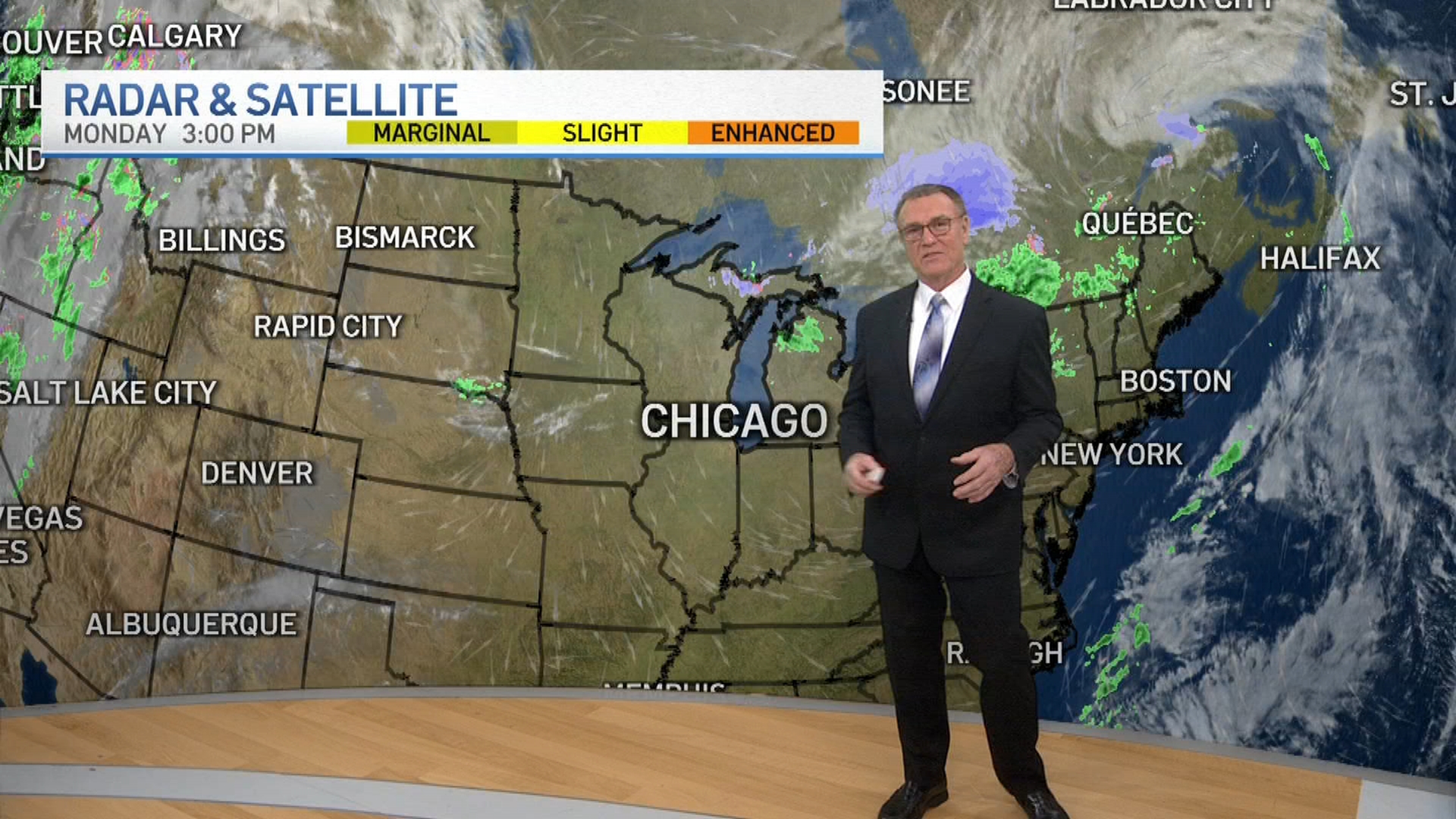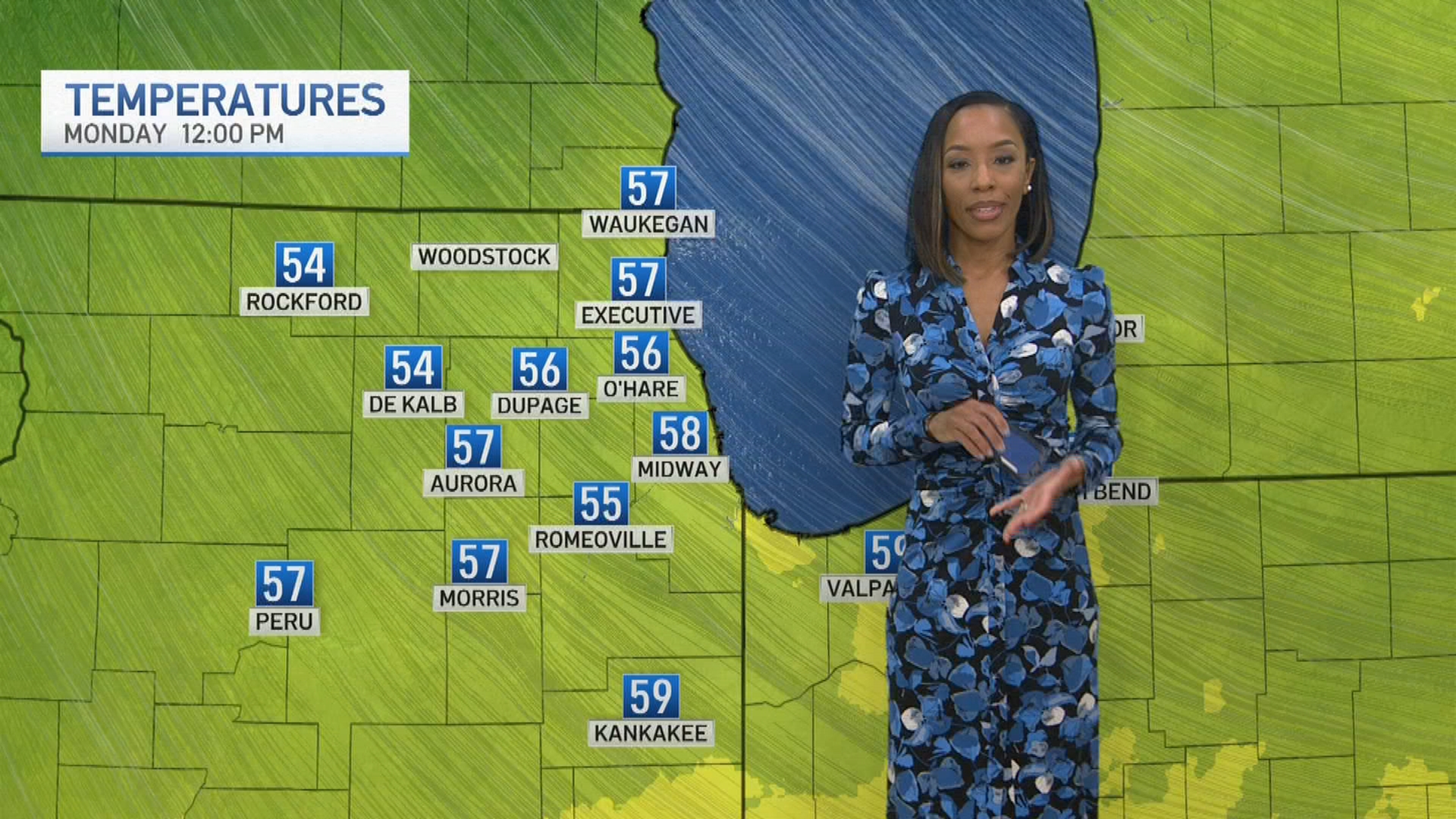While Chicagoans may have heard the city's air quality is particularly bad right now, just how bad is it and what exactly is causing the "unusual" levels?
The conditions have already led to an air quality alert, shut down beaches in some suburbs and led others to move scheduled events indoors or cancel them altogether.
Here's a look at what you should know:
How bad is the air quality?
Chicago's air quality entered "very unhealthy" territory just before noon Tuesday and continued to rise.
According to the government air quality website, AirNow, the PM2.5 -- an air pollutant also known as fine particulate matter, which is causing much of the haze in the region -- reached 250 as of 2 p.m. By comparison, levels were at 209 at 11:30 a.m. and 228 at 1 p.m.
Anything over 200 is considered "very unhealthy, though in the last month, the city hasn't seen its numbers climb above 160. Once the region reaches above 300, it enters a "hazardous" level.
According to the World Air Quality Index, which ranks cities across the globe from worst air quality to best, Chicago currently holds the No. 1 spot -- and that was before levels rose even higher Tuesday morning.
The National Weather Service also issued an air quality alert around that same time that remains in effect until midnight Wednesday, though conditions are expected to be "unhealthy for sensitive groups" across Illinois Wednesday.
Feeling out of the loop? We'll catch you up on the Chicago news you need to know. Sign up for the weekly Chicago Catch-Up newsletter.
The NWS reported smoke from wildfires in Canada is moving into the region and "pushing air quality into the unhealthy or worse categories." The agency urged people to reduce or limit outdoor activities.
Chicago Department of Public Health Commissioner Dr. Allison Arwady said reaching such a level is "unusual" in the Chicago area.
"It's actually pretty unusual for us to fall into it based on that PM2.5," she said. "Our ozone is actually good right now, so it's the PM2.5 - it's at a higher level."
What level is the Chicago area usually at?
Chicago Department of Public Health Commissioner Dr. Allison Arwady said reaching such a level is "unusual" in the Chicago area.
"It's actually pretty unusual for us to fall into it based on that PM2.5," she said. "Our ozone is actually good right now, so it's the PM2.5 - it's at a higher level."
According to data from AirNow, Chicago hasn't climbed above 160 for PM2.5 at all within the last month. The region has only reached above 150, entering the "red" category, just three times since May 28.
What is an unhealthy air quality level?
AirNow said its air quality index determines the level of air pollution and the correlating health concerns.
"When AQI values are above 100, air quality is unhealthy: at first for certain sensitive groups of people, then for everyone as AQI values get higher," the website states.
Once Chicago reaches above 300, it enters the highest level of concern known as "hazardous."
In total, there are six categories: green, or good; yellow, or moderate; orange, or unhealthy for sensitive groups; red, or unhealthy; purple, or very unhealthy; and maroon, or hazardous.
| Daily AQI Color | Levels of Concern | Values of Index | Description of Air Quality |
|---|---|---|---|
| Green | Good | 0 to 50 | Air quality is satisfactory, and air pollution poses little or no risk. |
| Yellow | Moderate | 51 to 100 | Air quality is acceptable. However, there may be a risk for some people, particularly those who are unusually sensitive to air pollution. |
| Orange | Unhealthy for Sensitive Groups | 101 to 150 | Members of sensitive groups may experience health effects. The general public is less likely to be affected. |
| Red | Unhealthy | 151 to 200 | Some members of the general public may experience health effects; members of sensitive groups may experience more serious health effects. |
| Purple | Very Unhealthy | 201 to 300 | Health alert: The risk of health effects is increased for everyone. |
| Maroon | Hazardous | 301 and higher | Health warning of emergency conditions: everyone is more likely to be affected. |
What is PM2.5?
According to the Environmental Protection Agency, "PM stands for particulate matter (also called particle pollution): the term for a mixture of solid particles and liquid droplets found in the air."
"Some particles, such as dust, dirt, soot, or smoke, are large or dark enough to be seen with the naked eye. Others are so small they can only be detected using an electron microscope," the EPA states.
PM2.5 in particular involves "fine inhalable particles, with diameters that are generally 2.5 micrometers and smaller." By comparison, the average human hair strand is about 70 micrometers in diameter, or 30 times larger than these particles.
PM2.5 is one of five major air pollutants regulated by the Clean Air Act, which also includes ground-level ozone, carbon monoxide, sulfur dioxide and nitrogen dioxide.
What should you and shouldn't you do?
Chicago Mayor Brandon Johnson on Tuesday released a statement about Chicago's "unhealthy" air quality.
"The City of Chicago is carefully monitoring and taking precautions as the U.S. Environmental Protection Agency has categorized our Air Quality Index as 'unhealthy' due to Canadian wildfire smoke present in the Chicago region," the statement read. "We recommend children, teens, seniors, people with heart or lung disease, and individuals who are pregnant avoid strenuous activities and limit their time outdoors."
Those recommendations fall in line with what AirNow recommends at "very unhealthy" levels.
People with heart or lung disease, older adults, children and teens:
- Avoid physical activities outdoors.
Everyone else:
- Avoid strenuous outdoor activities.
- Keep outdoor activities short.
- Consider moving physical activities indoors or rescheduling them.
In addition to limiting time outside, Johnson said Chicagoans may consider "wearing masks" due to the "unsafe conditions."
"For additional precautions, all Chicagoans may also consider wearing masks, limiting their outdoor exposure, moving activities indoors, running air purifiers, and closing windows," Johnson's statement continued. "As these unsafe conditions continue, the City will continue to provide updates and take swift action to ensure that vulnerable individuals have the resources they need to protect themselves and their families."



